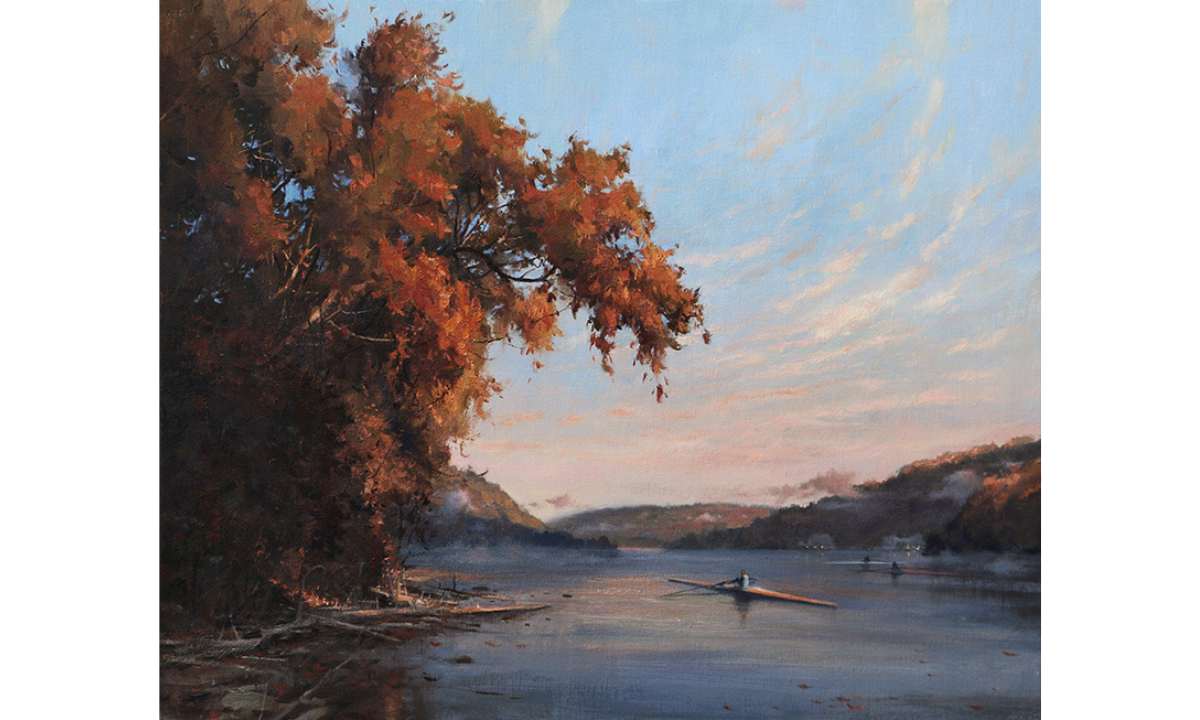The Application of Paint
“A Better Understanding of the Application of Paint” by Kenn Backhaus
Practice makes perfect when painting trees or other elements over a sky or any other passage of paint. First of all, planning for what will proceed in the development process needs to be foremost. Exercises ahead of time in painting over wet paint will give the student the confidence to do this process with ease. Building confidence begins with various exercises on either a small canvas panel or loose pieces of canvas. The planning ahead of time fore-instance, a sky passage that will eventually have trees over top of it means that I will keep the sky passage painted thinly but opaque enough to cover the canvas. A painted passage that will require other information painted over it cannot be thick. If it is thick, the brushwork needed to go over the top will blend and easily mix into the thick paint versus setting up on top of the passage. This is where the muddy results develop.
“First of all, planning for what will proceed in the development process needs to be foremost.”
Also, the student must learn the proper procedure of mixing the right consistency or viscosity of paint to easily go over another wet area, but not necessarily blend into the existing paint. This confidence again comes from prior experimentation and not from the finished painting that you are working on. That is why the old saying makes sense: “after painting an acre of canvas you will learn how to and what not to.” In our beginning stages, we are usually still painting in the “what not to” stage. We have to learn from our mistakes. It is learning the better habits formed from experimentation that builds the, how to stage for the future. Using the proper brush either softer or using the proper or more subtle touch with the brush is also part of the learning curve. Applying the properly mixed paint over an existing passage may require that the brush becomes the tool delivering just the mixed paint and maybe the bristles of the brush may never touch the canvas. This is just one procedure is only learned and understood from experimentation and trial and error to perfect the process.
In addition, experimenting with various types of mixing mediums that can actually cause the oil paint to set up quicker can also help with the process of painting all-prima. Also the use of alkyd oil paints that have an accelerant added to the overall mixture can also be used in lieu of oil paint mediums. I rarely use the latter...I have used alkyd oil paint on overseas painting trips where I was painting more to a studies stage and wanted those studies to dry quicker for an easier transportation flying back home. These additional options can be thrown into the mix, but the fore mentioned of brush sensitivity and proper viscosity are the most important!
I have found that over the years teaching, many a student does not feel the need for experimentation enough to develop proficiency! I cannot stress experimenting enough to the student. Asking of the instructor “how to” is the beginning stage, but I cannot provide the formula for the mixing viscosity or the particular light touch needed. This type of understanding and development only comes from trial and error of the students. Even watching a video of another person painting, still does not give the student the expertise of the process viewed.

